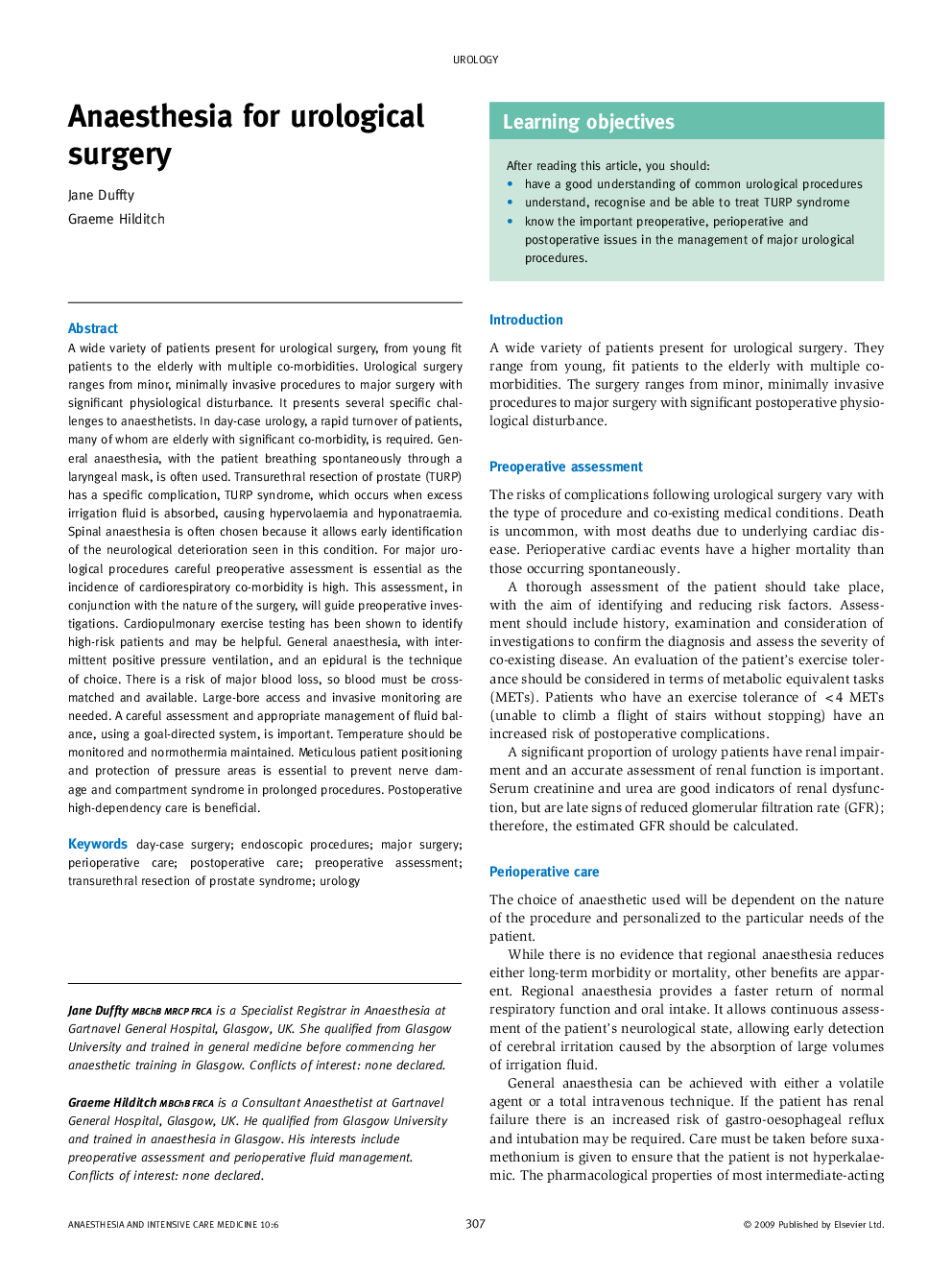| Article ID | Journal | Published Year | Pages | File Type |
|---|---|---|---|---|
| 2743550 | Anaesthesia & Intensive Care Medicine | 2009 | 6 Pages |
A wide variety of patients present for urological surgery, from young fit patients to the elderly with multiple co-morbidities. Urological surgery ranges from minor, minimally invasive procedures to major surgery with significant physiological disturbance. It presents several specific challenges to anaesthetists. In day-case urology, a rapid turnover of patients, many of whom are elderly with significant co-morbidity, is required. General anaesthesia, with the patient breathing spontaneously through a laryngeal mask, is often used. Transurethral resection of prostate (TURP) has a specific complication, TURP syndrome, which occurs when excess irrigation fluid is absorbed, causing hypervolaemia and hyponatraemia. Spinal anaesthesia is often chosen because it allows early identification of the neurological deterioration seen in this condition. For major urological procedures careful preoperative assessment is essential as the incidence of cardiorespiratory co-morbidity is high. This assessment, in conjunction with the nature of the surgery, will guide preoperative investigations. Cardiopulmonary exercise testing has been shown to identify high-risk patients and may be helpful. General anaesthesia, with intermittent positive pressure ventilation, and an epidural is the technique of choice. There is a risk of major blood loss, so blood must be cross-matched and available. Large-bore access and invasive monitoring are needed. A careful assessment and appropriate management of fluid balance, using a goal-directed system, is important. Temperature should be monitored and normothermia maintained. Meticulous patient positioning and protection of pressure areas is essential to prevent nerve damage and compartment syndrome in prolonged procedures. Postoperative high-dependency care is beneficial.
